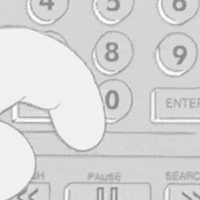
Man, they’re getting old, aren’t they? (Netflix)
Greetings from a train. I recommend train travel just as much as I usually do.
Anyway … about a decade ago, Netflix found its way to stand out from the rest of TV by giving viewers a degree of instant gratification. The idea that you could watch a show like House of Cards in one sitting was kind of innovative.
When Netflix was the primary streaming television game in town, it sort of worked, because it was a new and novel experience. But honestly … I soft of feel like the approach is poorly suited to where streaming television is going.
And I say this largely because I’m in the midst of rewatching Stranger Things start to finish, after months of watching a bunch of shows off Netflix where the appointment viewing model was really used effectively. From Severance to Barry to Only Murders in the Building, there are currently a lot of shows out there right now that are basically killing it with tension within the framework of the standard weekly episodic content without instant gratification.
Netflix could learn something from Barry.
There is a degree of shared experience that comes with watching a show on streaming that Netflix makes it harder to do. Sure, we didn’t really have much in the way of barometers when we first started watching Netflix, but now we do, and in some ways, Netflix’s classic model might be hurting it in the long run.
I’m not the only person to think this, either. As Richard Edwards of TechRadar notes, the binge model worked better then than it does now:
But now, six years on, it feels like a weird blast from the past that the show is still following the same release pattern. In fact, I’d have been much happier if season 4’s first volume had launched its seven episodes on a weekly basis.
Stranger Things, watching it in retrospect, strikes me as a show that could have been an even bigger phenomenon had it been distributed by another company. Which is not to say that it was a mistake for Netflix to pick it up—and in fact, it might have been the best choice at the time of its release—but that the fact that it’s not a work of appointment viewing kind of hurts it as a cultural phenomenon, because it costs the show something that it is otherwise designed for in spades—tension.
I’m not by any means suggesting that Netflix screwed up the release of the show, necessarily—after all, it’s a massive hit—but the culture around streaming in 2016 is not the same as that of 2022. We are willing to wait a week to get sucked into the next episode, then talk about it on our social channel of choice.
And as Netflix looks to fix itself, perhaps the place it should start is to let the sacred differentiator die off. Bring back appointment viewing—at least for the shows where the appointment could give the show some additional power.
Time limit given ⏲: 30 minutes
Time left on clock ⏲: 7 minutes, 4 seconds



